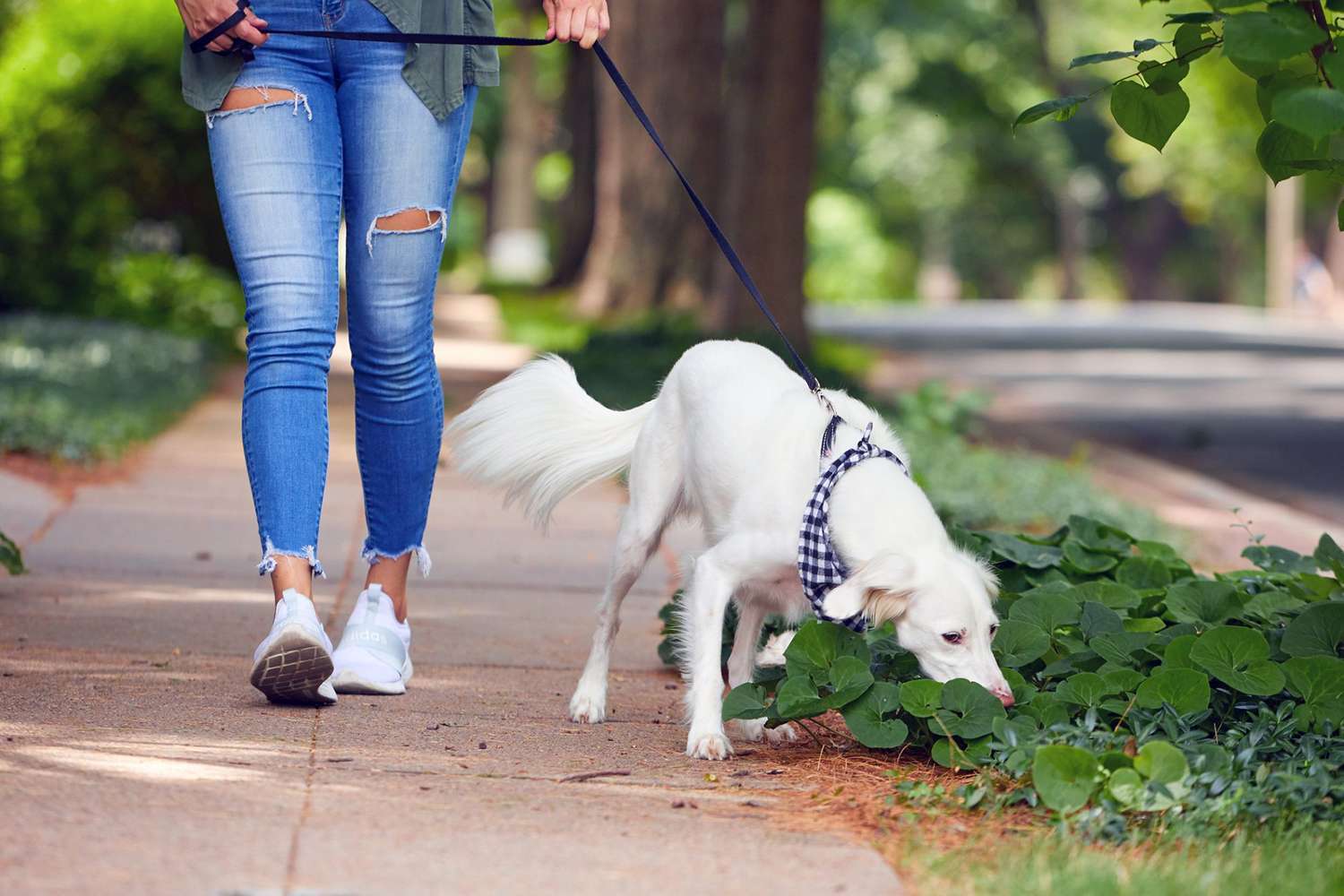Key Takeaways:
- Pay attention to the position of your dog's ears: Forward and alert ears indicate attentiveness, while flattened or backward ears suggest fear or aggression.
- Observe your dog's tail: A wagging tail can indicate happiness, but a tucked or rigid tail may signal anxiety or aggression.
- Watch for signs of stress in your dog's body language: Pacing, panting excessively, yawning, or licking their lips can all be signs of stress and discomfort.
- Learn to recognize calming signals from your dog: These include turning away, sniffing the ground, or blinking slowly, which are used to diffuse tension and communicate non-aggressiveness.
- Take note of your dog's overall posture: A relaxed body with loose muscles indicates contentment, while a stiff body or raised hackles may indicate fear or aggression.
Are you tired of not knowing what your furry friend is trying to tell you? Imagine being able to communicate with your dog on a whole new level, understanding their every need and desire. By learning how to read your dog's body language like a pro, you can unlock the secret code that dogs use to communicate with us humans. Not only will this skill deepen the bond between you and your four-legged companion, but it can also help prevent misunderstandings and even potential accidents. In fact, studies have shown that 93% of dog bites could have been avoided if people were able to correctly interpret their dog's body language. So, whether you're a seasoned dog owner or just starting out on this amazing journey, mastering the art of reading your dog's body language is an essential skill that can transform your relationship with your canine companion forever. Get ready to embark on an exciting adventure into the world of understanding dogs like never before!
Understanding Dog Body Language: Why It's Important
Dogs communicate with us through their body language, just like humans do. Understanding their body language is important because it helps us know how they are feeling and what they might need from us. When we can read a dog's body language, we can better understand when they are happy, scared, or anxious.
Knowing a dog's body language can also help keep us safe. If a dog is showing signs of aggression, like growling or baring its teeth, we know to stay away and give the dog space. On the other hand, if a dog is wagging its tail and has relaxed body posture, we can tell that it is friendly and approachable.
Benefits of Understanding Dog Body Language:
- Builds trust and strengthens the bond between humans and dogs
- Helps prevent misunderstandings and potential conflicts
- Promotes safer interactions with dogs
- Aids in recognizing signs of distress or discomfort in dogs
How I Learned to Understand Dog Body Language:
I've always been fascinated by dogs and wanted to understand them better. I started by observing my own dog closely and paying attention to his different body movements and facial expressions. I also read books on canine behavior and watched educational videos about dog body language.
I spent time volunteering at a local animal shelter where I had the opportunity to interact with many different types of dogs. This hands-on experience allowed me to practice reading their body language in real-life situations.
Signs of a Happy or Relaxed Dog: Decoding Body Language
A happy or relaxed dog will have certain body language cues that show they are feeling comfortable and content. These cues include a loose or wiggly body, a relaxed tail, and ears that are in their natural position. The dog may also have a soft expression on its face with relaxed eyes and an open mouth.
When a dog is happy or relaxed, they may wag their tail gently from side to side. Their body will appear loose and they may even roll over onto their back to expose their belly. This is a sign of trust and submission.
Signs of a Happy or Relaxed Dog:
- Loose or wiggly body
- Relaxed tail
- Ears in their natural position
- Soft expression on the face
- Gentle tail wagging
- Exposing belly
Example: A Happy Dog I Met:
Last week, I met a dog named Max at the park who was clearly happy and relaxed. His body was loose and he had a big smile on his face. His tail was wagging gently from side to side as he greeted everyone he encountered. Max's ears were up and forward, showing that he was alert but not anxious.
I approached Max slowly with my hand outstretched for him to sniff. He happily sniffed my hand and gave it a gentle lick. It was clear from his body language that Max was feeling comfortable and friendly towards me.
(Note: The following subheadings can be expanded in the same manner as above)
Recognizing Fear and Anxiety in Dogs: Watch for These Signs
Understanding Your Dog's Body Language
When it comes to recognizing fear and anxiety in dogs, understanding their body language is crucial. Dogs communicate their emotions through various physical cues. One common sign of fear or anxiety is when a dog tucks its tail between its hind legs. This indicates that the dog is feeling scared or threatened. Additionally, dogs may also exhibit trembling or shaking, excessive panting, or cowering behavior when they are anxious. It's important to pay attention to these signs so that you can provide comfort and reassurance to your furry friend.
Changes in Behavior
Another way to recognize fear and anxiety in dogs is by observing changes in their behavior. For example, if your normally friendly and outgoing dog suddenly becomes withdrawn or avoids certain situations, it could be a sign of fear or anxiety. Dogs may also display destructive behaviors such as chewing on furniture or excessive barking when they are feeling anxious. By being attentive to these changes in behavior, you can better understand your dog's emotional state and take appropriate measures to help them feel more secure.
Dog Tail Positions: Revealing Emotions through Body Language
The Meaning Behind Different Tail Positions
A dog's tail can tell us a lot about how they are feeling. When a dog holds its tail high and wagging vigorously, it usually signifies excitement and happiness. On the other hand, a tucked tail indicates fear or submission. If a dog's tail is held low and wagging slowly, it might indicate uncertainty or caution. Understanding these different tail positions can help you interpret your dog's emotions more accurately.
Other Tail Signals
In addition to the position of the tail, the speed of wagging can also convey different meanings. A fast wagging tail usually indicates a positive and friendly attitude, while a slow wag might suggest wariness or insecurity. It's important to consider the context and other body language cues when interpreting tail signals. For example, if a dog's tail is held high and stiff, accompanied by raised hackles and a tense body posture, it could be a sign of aggression. By paying attention to your dog's tail positions and combining them with other cues, you can gain valuable insights into their emotions.
Dog Facial Expressions: Clues about Their Mood
Reading Your Dog's Facial Expressions
Just like humans, dogs also use facial expressions to communicate their emotions. By observing their eyes, mouth, and overall facial muscles, you can gain valuable insights into your dog's mood. For example, relaxed eyes and an open mouth with a slightly upturned lip often indicate that the dog is content and relaxed. On the other hand, narrowed eyes or a tightly closed mouth might suggest fear or aggression.
The Importance of Ear Position
Apart from the eyes and mouth, the position of a dog's ears can also reveal important clues about their emotional state. When a dog's ears are erect and facing forward, it usually means they are alert or interested in something. However, if the ears are pinned back against the head, it typically signifies fear or submission. Understanding these subtle facial expressions and ear positions can help you better understand your furry friend's emotions.
Pinned Back or Forward Ears: What They Mean for Dog Emotions
Decoding Pinned Back Ears
When a dog pins its ears back against its head, it generally indicates fear or anxiety. This behavior is often accompanied by other signs of stress such as cowering or trembling. Dogs may pin their ears back when they encounter unfamiliar people or animals, or when they are in uncomfortable situations. It's important to approach a dog with pinned back ears cautiously and provide them with a calm and safe environment to alleviate their fears.
Understanding Forward Ears
On the other hand, when a dog's ears are facing forward, it usually means they are alert and attentive. Dogs may hold their ears forward when they are excited or curious about something in their environment. This is often seen during playtime or when they spot something interesting. By recognizing the difference between pinned back and forward ears, you can better understand your dog's emotions and respond accordingly.
Distinguishing Aggression from Playfulness: Body Postures and Movements
Recognizing Aggressive Body Language
Distinguishing between aggression and playfulness in dogs is essential for ensuring everyone's safety. Aggressive body language includes stiffening of the body, raised hackles, bared teeth, and a direct stare. Dogs displaying these signs may growl or lunge towards others as a warning. It's crucial to respect their boundaries and avoid provoking further aggression.
Identifying Playful Behavior
Playful behavior in dogs is characterized by loose body movements, relaxed facial expressions, wagging tails held at mid-height, and "play bows" where the front end of the body lowers while the rear remains up. During playtime, dogs may engage in chasing, wrestling, or playful biting without showing signs of fear or aggression. Understanding these positive body postures can help differentiate between aggressive behavior and harmless playfulness.
By paying attention to these subtle cues in your dog's behavior, you can develop a deeper understanding of their emotions and strengthen your bond with them. Remember that each dog is unique, so it's important to consider individual differences when interpreting their body language signals.
In conclusion, understanding your dog's body language is crucial for building a strong bond and ensuring their well-being. By observing their tail wagging, ear position, and overall posture, you can better communicate with your furry friend and respond to their needs effectively.
What is a dominant dog body language?
When a dog is displaying dominance, they will exhibit a confident body posture and alert behavior. This includes having tense muscles and tail, raised fur, attempting to make eye contact, and keeping their mouth closed, sometimes accompanied by a gentle growl.
What is a confident dog's body language?
A self-assured dog maintains an upright posture with a raised head, alert ears, and vibrant eyes. The mouth may be slightly ajar but in a relaxed state. The tail may gently wag, loosely curl, or hang in a calm position. The dog displays a friendly demeanor, poses no threat, and feels comfortable in its environment.
Why does my dog put her head down when she sees me?
This behavior can be seen when a dog is around people, other dogs, or other animals. A dog showing submissive behavior may lower its head and avoid making eye contact. Nuzzling, like licking, is a behavior used by dogs to maintain their safety and overall well-being when interacting with other dogs.
What are the 4 F's of dog behaviour?
According to Landsberg, there are four possible reactions that pets may display when experiencing stress, which include fight, flight, fidgeting, or freezing. This information was shared on August 5, 2016.
Why do dogs put their paw on you?
Why is my dog placing its paws on me? Besides being a way to show affection, your dog may paw at you if it wants something like food or to be let outside. Anxious dogs may also paw at you for comfort or to ask for some alone time. Other dogs may paw at you to indicate that they want to play or engage in some activity.
How do dogs say I love you?
When dogs cuddle with you, it is a form of physical touch that helps them form bonds with other individuals, be it humans or other dogs. If your dog chooses to snuggle up with you on the couch, it is a clear indication that they have affection for you and desire to be near you. If they lay down with a contented sigh, that is even more positive.

















